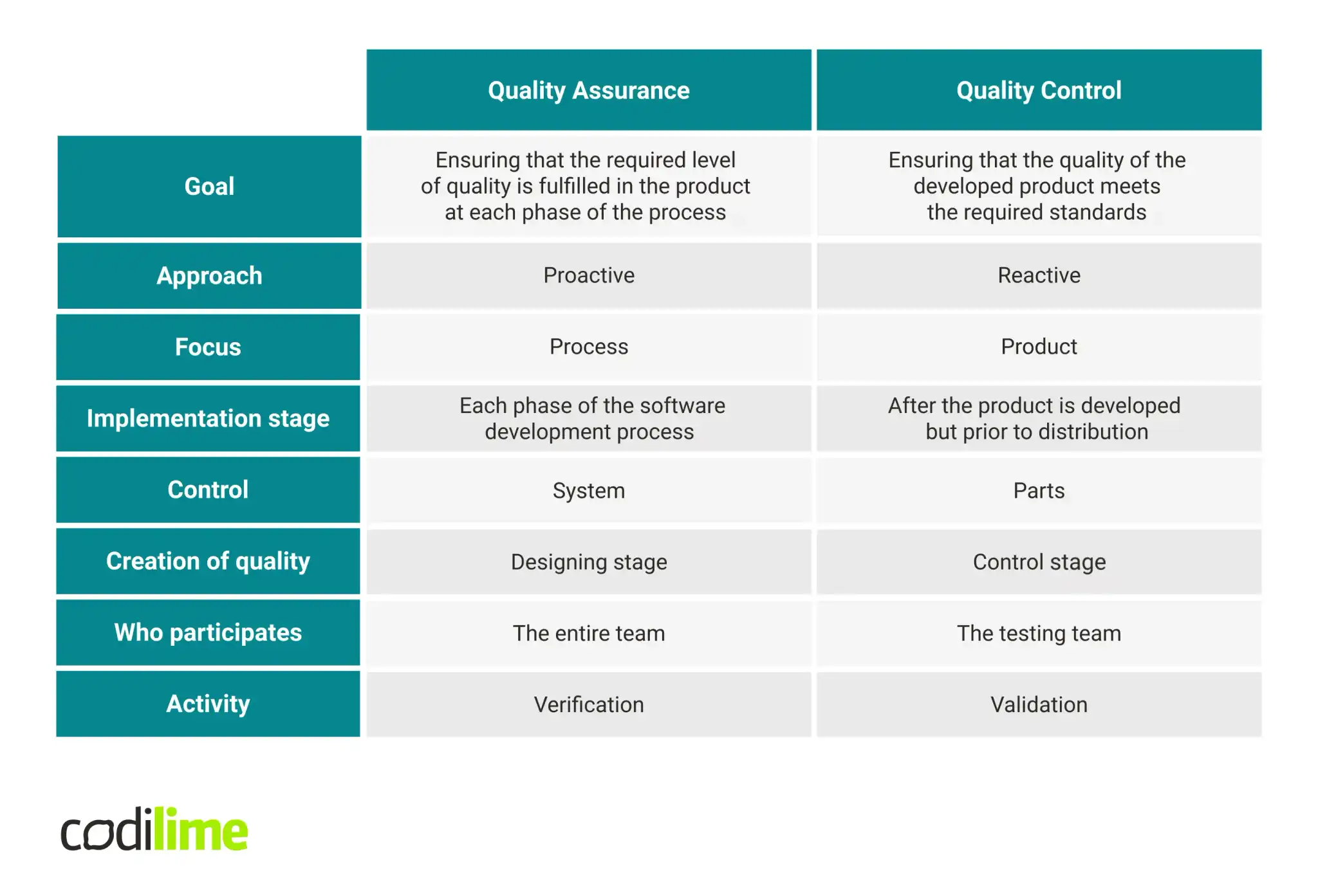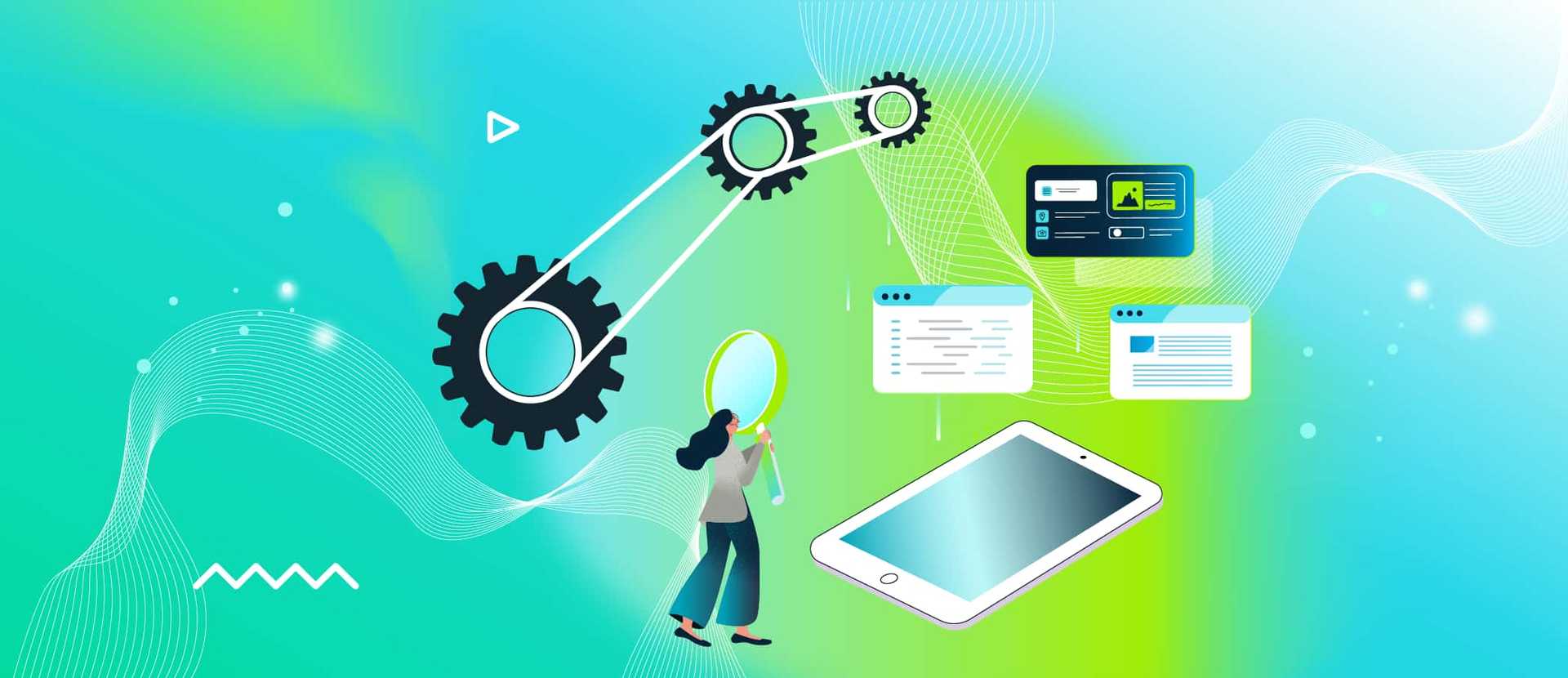Quality should be a habit for every organization, no matter the industry. If you deliver products or services, the quality level is something you should constantly monitor. The major components of quality management are Quality Assurance and Quality Control. These terms are often confused with one another and hence, used interchangeably. However, there are a number of distinctions between the two. Let’s explain the difference between Quality Assurance and Quality Control.
What is Quality Assurance
Quality Assurance is the part of quality management that is focused on providing confidence that all quality requirements are fulfilled. QA means all activities that focus on preventing defects, as well as monitoring and verifying that the process of delivering high quality is being followed. In software development, Quality Assurance planning should be undertaken at the beginning of a project - the objective of Quality Assurance is to find out the cause of nonconformities and take remedial steps to eliminate them.
Quality Assurance is a complete system that gives adequate confidence that the product or service stays compliant with predefined standards and regulations. It is a part of the overall project and takes place throughout the whole cycle of the software development process. Successful Quality Assurance guides the process of developing software and protects the final product or service from possible defects; with the aim of satisfying the customer’s needs as much as possible. It utilizes given standards, guidelines, specifications, and other related documents. Quality Assurance is performed by the entire organization, including the product team, managers, clients or third parties.
Examples of QA activities: auditing, reviewing, code inspection, design inspection, simulations, functional testing, standardization, path testing, etc.
What's also essential—Quality Assurance automation can make the process smoother and more efficient. Are you wondering how? For example, by integrating the existing test framework with CI/CD pipeline. Integration is only one of many solutions with how we could help you with implementing QA automation.
How to implement Quality Assurance in software development?
If you want to successfully deliver software or apps, you should be aware of how to implement Quality Assurance at the organizational level. There are various approaches to QA processes. Let’s differentiate the four steps commonly known as PDCA:
- Plan – at the very beginning, you should create a common agenda, developing a deep understanding of the problem, and the corresponding solution which will be built to rectify it.
- Do – starting on a small scale, verify whether the plan and solution are in line. During this step, communication is key to make sure all parties are on the same page.
- Check – after the solution is implemented on a small scale, check if it delivers the expected results. Then, you can move forward with the remaining development.
- Act – once the solution is developed and checked, carry out adjustments to improve and fix identified issues of the process.
It is crucial to highlight that the PDCA steps make up a single, constant process that should never stop. If you regularly follow the above steps, improvements are gradually and constantly made, minimizing the number of bugs in the final software product.
Why you should implement QA in software development
QA has numerous advantages. First, it is an umbrella activity ensuring that predefined quality standards are being met at any stage of the software development lifecycle. Consequently, Quality Assurance reduces final costs as most mistakes are prevented at early stages. QA is crucial for a product or service to succeed in the market and satisfy the customer’s expectations. If implemented properly, Quality Assurance processes remove barriers between workers and managers – collaboration is more important than supervision here. Finally, QA enhances motivation – workers understand their importance and get recognition for what they do. All these lead to competitive advantage.
In this article, you can read more about why you need Software Quality Assurance in your company.
What is Quality Control
Quality Control is also part of quality management. However, QC is focused on fulfilling quality requirements. Broadly speaking, it is the inspection aspect of quality management. QC is a strategy of detection – it uses operational techniques and procedures to identify defects in products and services and ensure that the project deliverables meet the desired quality standards. The Quality Control process detects bugs and defects in the product and reports them so that they can be fixed. If a problem is identified, it must be resolved before the product is delivered to customers. Summing up, Quality Control is the final checkpoint before the delivery.
Examples of Quality Control activities: inspection, measurements, manual and automated testing, verification, and validation.
Why you should implement QC in software development
Quality Control, similarly to Quality Assurance, reduces costs. Thanks to QC, customer needs are better satisfied - when you combine QC activities with requirements engineering processes, you get minimal consumer complaints after the software is delivered. Quality Control reveals common errors so they can be avoided in the future. It develops and promotes quality awareness among employees, which is a great help in attaining the required quality level of the product. Quality Control increases the competitiveness of the company as it delivers better quality software and meets the requirements of the customer. Finally, thanks to QC, you can introduce changes to the projects and plans that follow.
What is the difference between Quality Control and Quality Assurance
If you want your software development process to be successful, understanding the difference between Quality Assurance and Quality Control is a great help. Here are the major differences to help you get familiar with the concepts better.
Proactive versus reactive
Quality Assurance is proactive – it happens through establishing an excellent QA management system and assessing its adequacy. It includes regular conformance audits of the system’s operations. The main goal of Quality Assurance is ensuring that defects aren’t introduced. Thus, QA works towards preventing issues before they occur through process design. On the other hand, Quality Control is reactive. It identifies defects after their occurrence. The strategy focuses on testing products once they are developed to ensure all the safety measures have been met.
Process versus product
Quality Assurance is all about the process. It ensures the process of development is geared to prevent quality issues arising. Quality Assurance processes are documentation, process management, audits, personnel training, and change control management. Quality Control is all about the product as it focuses on the quality of the final software or app. Quality Control encompasses achieving and maintaining product quality, process, and service through batch monitoring, product sampling, validation, inspection, and testing.
Implementation stage
Quality Assurance activities define quality standards for product design, development, marketing, and sales. These are effectively guidelines and rules that should be followed during the entire process of product development. Some people call Quality Assurance a roadmap for creating a product. On the other hand, Quality Control activities verify specific elements of the product, post-development and before distribution. They confirm that the product meets the predefined standards.
The system versus the parts
Quality Assurance oversees the entire system of software development. The goal is to establish numerous processes to ensure inputs are effective and fully safe. Quality Control measures the outputs of the system, testing each part of the product once ready.
Creation versus verification roles
Quality Assurance’s role is to reduce the number of bugs and defects at any stage of software development. The entire system of QA can be called a comprehensive roadmap for churning out quality products. It may include design standards, distribution, user experience, sales, and marketing. On the other hand, Quality Control comprises product verification after development but prior to distribution. The main goal is to find as many bugs as possible.
Team versus individuals
Quality Assurance involves the entire Quality Management team. Every team member has a role to play in the QA strategy – they are responsible for the standard operating procedures, and they contribute towards designing the quality measures. The team is responsible for documentation, training standards, and a review that covers all staff. Quality Control is more the primary responsibility of a specific part of the team. Their duties include following the standard procedures for product testing. They also document their findings using standardized procedures for product validation and product testing.
In the table below, you will find all the important differences between Quality Assurance and Quality Control.

Conclusions
If you’ve been wondering what the difference between Quality Control and Quality Assurance is, this article has given you a clear answer. Both QA and QC can be part of the bigger process of Quality Management. They are two tools that help to provide better quality software to users. Quality Assurance implements standardized procedures and Quality Control follows these procedures to ensure the deliverable is of the required quality. QA overlooks the whole software development cycle whereas QC is a distinct part of the software testing cycle. QA is performed before QC.




